Learn how to change the default template or Theme in PowerPoint 2007 for Windows.
Author: Geetesh Bajaj
Product/Version: PowerPoint 2007 for Windows
OS: Microsoft Windows XP and higher
When PowerPoint 2007 is launched, it opens with an empty presentation of just one slide. This one slide typically has placeholders for a title and a subtitle, and any text you type shows up in black over a white slide background. Why do you have to live with these defaults? Can you change this blank presentation so that you get a slide that's part of your custom PowerPoint template or Theme? Or even any of the other Templates/Themes built within PowerPoint?
Yes, that's possible. But before we show you how you can change the default Template/Theme, let's explore what you get when you launch PowerPoint. Yes, you do get the one slide blank presentation, as shown in Figure 1, below. However, there's more here than what meets the eye. First of all, this blank presentation also has a Template/Theme. You will find the Template/Theme name mentioned on the Status Bar, as shown highlighted in red within Figure 1, below.
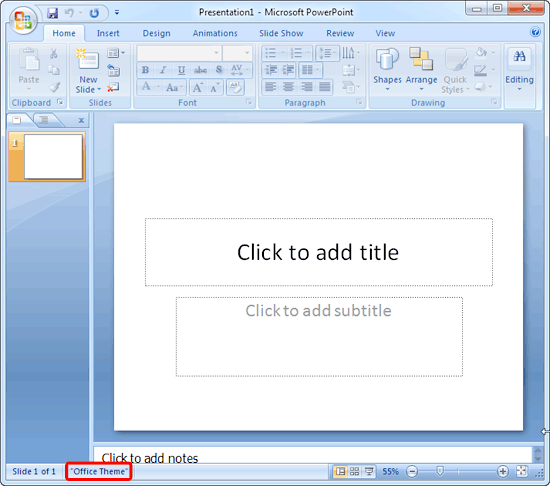
Now that we know that this default blank Template/Theme influences the black text on white slide look, can we change this to something else? Yes! And to do that, you need to follow any of the two alternative options. The first option creates a default template. The second option creates a default Theme. Choose the one that works for you.
So are Templates and Themes different? Yes, they are different but they are similar too. The biggest difference is indicated in their full names: PowerPoint Template and Office Theme. Whereas Templates are limited to PowerPoint alone, Themes can also influence documents created in other Office applications such as Word and Excel.
Beyond this difference, Templates can also contain sample slides, and Themes cannot.
Follow these steps to save your own default template in a specified location and also provide it with the right name:

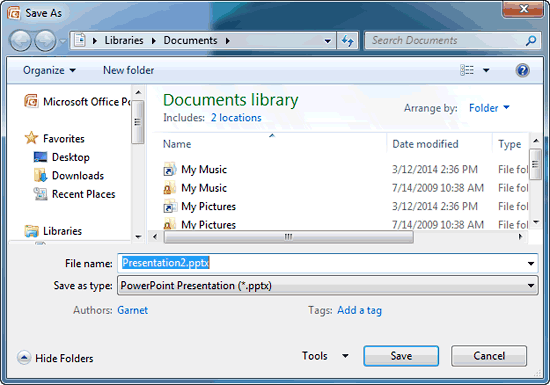
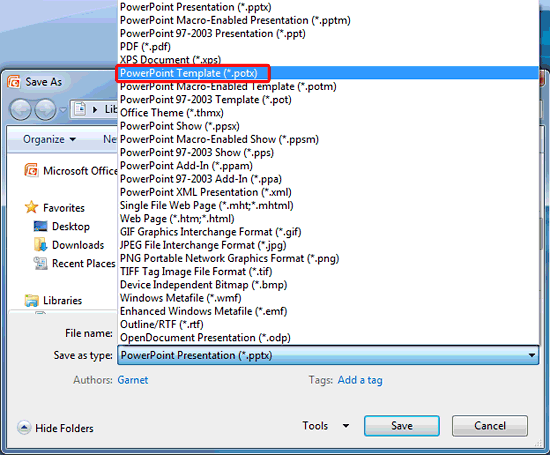
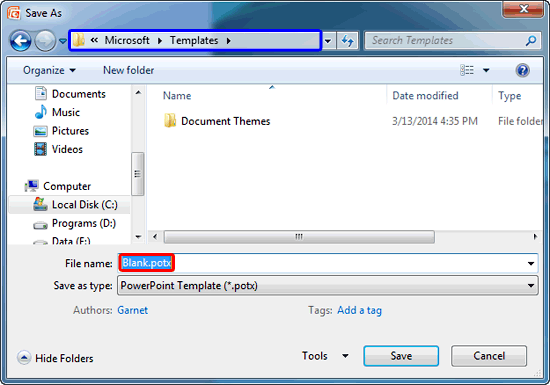

Follow these steps to save a default Theme:

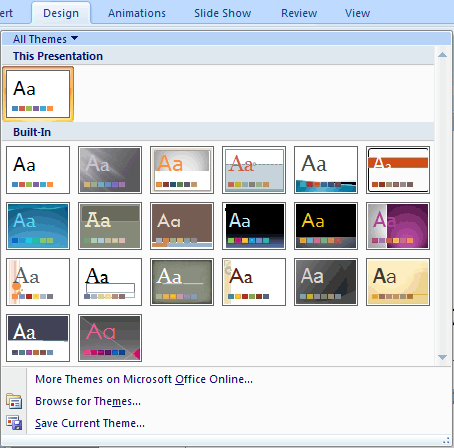
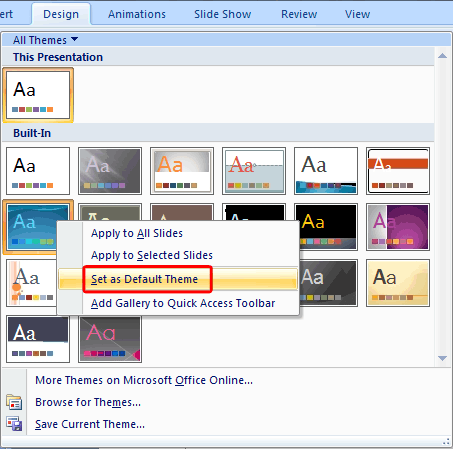
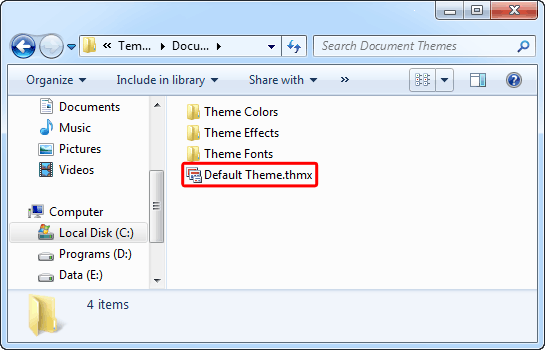
Depending upon your version of Windows, the following are the correct folders for the default template (Blank.potx) or the default Theme (Default Theme.thmx). Substitute your user name for <UserName>.
Windows 8:
Template: C:\Users\<UserName>\Documents\Custom Office Templates
Theme: C:\Users\<UserName>\AppData\Roaming\Microsoft\Templates\Document Themes
Windows 7:
Template: C:\Users\<UserName>\AppData\Roaming\Microsoft\Templates
Theme: C:\Users\<UserName>\AppData\Roaming\Microsoft\Templates\Document Themes
Windows Vista:
Template: C:\Users\<UserName>\AppData\Roaming\Microsoft\Templates
Theme: C:\Users\<UserName>\AppData\Roaming\Microsoft\Templates\Document Themes
Windows XP:
Template: C:\Documents and Settings\<UserName>\Application Data\Microsoft\Templates
Theme: C:\Documents and Settings\<UserName>\Application Data\Microsoft\Templates\Document Themes
If you are not taken to one of these folders automatically, navigate there manually. The best part about knowing these folder locations is that once you have created the Blank.potx or the Default.thmx file, you can easily copy this from one computer and then place it within the same location in any other computer. You end up setting the default Template/Theme without even launching PowerPoint!
See Also:
Themes Basics: Change the Default Template or Theme in PowerPoint (Index Page)
Change the Default Template or Theme in PowerPoint 2013 for WindowsYou May Also Like: How to Find Your Market in PowerPoint | Flags and Maps - V PowerPoint Templates


Microsoft and the Office logo are trademarks or registered trademarks of Microsoft Corporation in the United States and/or other countries.